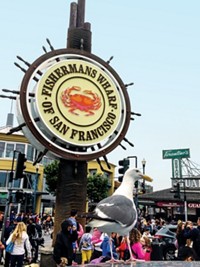Advertisement
Grab your lab coat. Let's get started
Welcome!
Welcome!
Create an account below to get 6 C&EN articles per month, receive newsletters and more - all free.
It seems this is your first time logging in online. Please enter the following information to continue.
As an ACS member you automatically get access to this site. All we need is few more details to create your reading experience.
Not you? Sign in with a different account.
Not you? Sign in with a different account.
ERROR 1
ERROR 1
ERROR 2
ERROR 2
ERROR 2
ERROR 2
ERROR 2
Password and Confirm password must match.
If you have an ACS member number, please enter it here so we can link this account to your membership. (optional)
ERROR 2
ACS values your privacy. By submitting your information, you are gaining access to C&EN and subscribing to our weekly newsletter. We use the information you provide to make your reading experience better, and we will never sell your data to third party members.
Environment
Pacifichem Potpourri
Meeting highlights include magnetic wastewater treatment, potential peptide drugs, silole chemistry
January 2, 2006
| A version of this story appeared in
Volume 84, Issue 1
Hawaii in December, with chemistry. What could be better?
So when the 5th International Chemical Congress of Pacific Basin Societies-Pacifichem 2005, for short-came to Honolulu in mid-December, so did more than 11,000 attendees from 70 countries. This was a record: The previous Pacifichem, held five years ago, drew some 9,000 participants from 58 countries.
The 2005 conference, which was sponsored by chemical societies in the U.S., Japan, Korea, Canada, New Zealand, and Australia, offered oral and poster presentations in 950 sessions covering all areas of chemistry. The sessions ran from 7:30 AM to 10 PM, so conferees could leave their hotel room in the morning when it was still dark outside (sunrise was around 7 AM) and not return until after dark in the evening. But many people seemed to take time out to walk along Waikiki Beach, watch the sun set over the Pacific Ocean, or do some island-hopping.
Here's a small assortment of research highlights that were presented by scientists from Japan, Australia, and the U.S.
STORIES FROM PACIFICHEM
Cleaning Up Wastewater Magnetically
New process, now in pilot-scale experiments, could cut wastewater treatment costs.
Crypteins: Hidden Gems
Proteolytic peptide fragments from human tissues are being mined for potential therapeutics.
Siloles Display Surprising Chemistry
Silicon-containing rings prove to be highly aromatic and strong reducing agents.




Join the conversation
Contact the reporter
Submit a Letter to the Editor for publication
Engage with us on Twitter